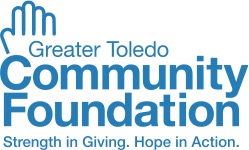
Posted March 31, 2010
By Tim Armour
Yesterday I discussed the scientific community’s profound disappointment in the failure of three different, high-profile Alzheimer’s drugs. But despite their inabilities to get at the root of this disease, they have played an important role in what will likely be the success stories of tomorrow.
First, all of these drugs addressed what most researchers believe is the key “bad guy” in Alzheimer’s disease pathology — the small protein (peptide) Abeta, and particularly it’s genetic variant, Abeta42 (that means there are 42 molecules of the Abeta variant in this species instead of the more frequent 40 or other conformations). The Abeta trail is a long and winding one which first pointed to Abeta42 as the substance which formed the plaques in the brain that somehow extinguished brain cell communication. Recently, the Alzheimer’s research field has moved to a more sophisticated understanding of how Abeta42 does its work. It is now increasingly thought to be toxic only or primarily in its aggregated, clumped or “oligomer” form. These oligomers are now seen to be forming at or near the neurons in the brain responsible for the neural communication that enables acquisition of new information and creation of memory.
The science of all of this is complicated and rapidly evolving, but the essence is that the focus of the cause of the disease has moved for the most part from the plaques to the formulation of the Abeta peptide itself and its coalescing into the more toxic oligomers.
One great challenge to the rapid evolution of the understanding of the causes of the disease is the assault on the “Abeta” thesis because of the failure of these drugs to stop the disease. If their target was the control or elimination of Abeta42 and they failed, the reasoning goes, maybe Abeta42 is the wrong target.
Not so fast.
1). The early drugs and this second “failed” generation have focused on trying to stop Abeta42 from forming in the first place. Flurizan, for example, was designed to block Abeta42 production by modulating an enzyme important to Abeta42 creation (“gamma secretase”). The drug failed because it was not potent enough to affect change in Abeta levels; stronger doses delivered to human patients created fatal side effects. That means that the theory of the “mechanism of action” is probably not wrong, but this particular drug compound and its near relatives failed to achieve the appropriate risk/effectiveness balance.
2). Bapineuzumab was based on Abeta immunotherapy (passive immunization) in which antibodies targeting Abeta are injected intravenously into AD patients. While initial trial data looked promising, more recent trials showed that, once again, high enough does of the drug to be effective caused dangerous side effects for patients. A further complication is that the drug appeared to be slightly more effective in the group of patients which do NOT carry the best known and most prevalent Alzheimer’s gene, APOE4. The hurdles to re-balancing this particular family of compounds will prove to be a great challenge for Johnson and Johnson’s Alzheimer’s unit.
3). Finally, Dimebon. A strange story indeed, and a heartbreaking one for patients and their families who read about the promise of this “wonder drug.” While the Dimebon “method of action” against Alzheimer’s pathology is not yet apparent, what is clear is that based on the rigorous (but hopeful!) US trials, the drug does not work. It is safe, but completely ineffective. Some who know this story more intimately suspect that the original Russian data was misleading; others simply don’t know what to make of the disparity. In any case, there appears to be little or no hope for this drug as an effective therapy against Alzheimer’s disease.
What does all this tell us? Aside from dashed hopes and ruined companies, what it does NOT tell us is that the Abeta trail is a wild goose chase. Not at all.
So where does this leave us? Stay tuned tomorrow for the good news!





